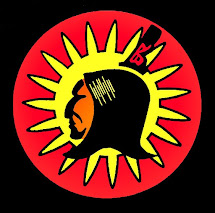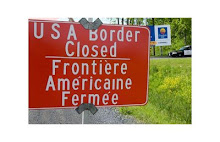
The Senecas are trying to explain that the rights they claim are guaranteed in treaties and that those treaties are inviolate and protected by the “supremacy” clause of the U. S. Constitution. They could also point out how their exemption from state taxes came in exchange for millions of acres of land—an exemption that was really no different than the tax breaks and subsidies grant- ed developers for building condos on the waterfront, rehabilitating buildings, keeping businesses downtown or luring businesses from one town to another.
However, there is far more to their story than broken treaties and promises—a story that the government and the American public would like to dismiss or forget. The determination of the Senecas to jealously and zealously protect their sovereignty and independence must be understood against the backdrop of the injustices they and all Indians have endured for 400 years. The story unfolding in Western New York is merely the latest chapter in the long, often sordid, and always tragic history of Indian and white relations.
Indians have been driven off their lands, herded onto reservations, deprived of their ability to sustain themselves and their way of life, stripped of their languages and cultures, denied their right to practice their religions and, when they resisted, subjected to warfare that in any other instance would be considered genocide.
The numbers don’t lie. The North American indigenous population in 1492 was between 15 million and 18 million. It was less than 250,000 by 1900. The first peoples of this country were on the verge of extinction by the early 20th century. The removal of Indians from their ancestral territories to reservations resulted in the loss of land and the disintegration of social, political, economic and family structures that left tribes in a perpetual state of dependency and vulnerable to the whiskey and wiles of the white man.
Although the days of warfare, removal and epidemics sweeping through their populations ended long ago, the trauma of the past was transmitted along generational lines in the form of new and just as deadly epidemics: alcohol and meth, teenage pregnancy and suicide, diabetes and heart disease. The statistics are startling and disheartening. Indians have a higher mortality rate, including among infants, have a shorter life expectancy and are more likely to die from cancer, heart disease and alcohol abuse than the general population. On some of the more isolated, Western reservations, unemployment can reach 50 percent to 60 percent, and The Buffalo News has recently reported that Indians are the poorest people in America.
Government policies have made matters worse. Shipping children off to boarding schools to be Christianized and civilized, or relocating families to cities far from reservations, created generations of children who, to borrow a popular Indian metaphor, were neither wolf nor dog, neither white nor Indian. Alone and lonely, desperate and despairing, they all too often succumbed to the self-destructive behaviors that have ravaged Indian communities for generations.
In Western New York, the Senecas have enjoyed a revival due largely to casino revenues and their tax-free cigarette and gasoline enterprises, but that prosperity is only recent and came only after they were robbed of millions of acres of land and, thus, their ability to sustain themselves and their language, culture and independence. A few decades ago, they suffered from the same poverty and its attendant afflictions as tribes on other reservations, and from the same heavy-handed and clumsy efforts at forced assimilation.
For example, the Thomas Indian School on the Cattaraugus Reservation was not closed until 1957, long after most other Indian boarding schools were shuttered, and only after thousands of Indian children from across the state were taken from their homes, sometimes as infants, placed in the care of strangers and alienated from their language, culture and families. When they were released, often at the age of 21, they were cast adrift in a world they were not prepared to enter and that was unprepared to accept them. The end results of this education for assimilation were broken homes, broken families and broken lives.
The Thomas Indian School was a product of the destructive forces of removal that created generations of orphaned, abandoned and neglected children. The Seneca and other Iroquois tribes are generally not associated with removal since they retained some of their ancestral lands. Unfortunately, that did not save them from the trauma associated with removal, including poverty, disease, starvation, population loss, alcohol abuse and suicide.
The removal of the Seneca and other Iroquois tribes began in earnest with Gen. John Sullivan’s campaign in 1779 that destroyed villages, crops and food stores along the Genesee River and drove the Senecas west to the Buffalo Creek territory. When Sullivan’s troops were done, they left behind an invisible and deadly present: smallpox. The combination of warfare, starvation and disease decimated the native population of New York. The Seneca tribe alone would lose nearly 50 percent of its population. So bad were conditions on the New York reservations that throughout the 19th and into the 20th century, the Senecas would suffer from a higher mortality rate than the rest of the population. The loss of land and population undermined their social, economic and political institutions, and left them in a self-perpetuating state of dependency.
The Senecas eventually lost nearly all of the 4 million acres guaranteed by the Canandaigua Treaty of 1794. The loss of lands culminated in 1842 with the Buffalo Creek Treaty, one of the most fraudulent treaties in the long history of fraudulent treaties, that forced the Senecas off the more than 80,000 acres that encompassed most of downtown Buffalo. To be sure, the Seneca and other tribes were not forced to sign the treaties at gunpoint, but starvation can be just as compelling as a soldier with a gun.
The trauma of removal did not end with the treaties that defrauded them of their lands in the 18th and 19th centuries. In the 1950s, Senecas on the Allegany Reservation were forced out of their homes as their land, although guaranteed by treaty, was inundated with the waters of the reservoir created by the Kinzua Dam, while at the same time the Tuscarora Indians in Lewiston lost a good portion of their reservation to the New York Power Authority.
The losses suffered by the Seneca and other New York tribes are often forgotten or obscured by economic and constitutional issues. There are other facts that get lost, including the fact that Indians pay taxes like the rest of us. They pay federal income taxes, Social Security and Medicare taxes, and if they work and live or shop off the reservation, they pay state income tax, local property taxes and even sales taxes. Furthermore, the state takes 25 percent off the top of their casino revenues, which amounts to more than $100 million per year, and that brings us back to the question of taxation.
The Senecas claim that the same Buffalo Creek Treaty of 1842 that defrauded them of 80,000 acres of prime real estate exempted them “from all taxes, and assessments for roads, highways or any other purpose.” Their opponents cry foul, claiming that it gives them an unfair advantage in the cigarette and gasoline trade. However, the fact remains that the tax exemption Indians claim by treaty is nothing more, and in fact certainly far less, than the billions of dollars of tax exemptions and subsidies routinely granted to businesses like Bass Pro in exchange for dubious promises of economic stimulation and for which the taxpayers of New York are on the hook. However, there is one difference: the Seneca and other Indians have paid dearly and tragically for their rights.
There is more than just a little irony to all of this. For 400 years, Indians have been told to learn the white man’s language, live in the white man’s houses, worship the white man’s God and adopt the white man’s values. However, when they finally do act like white men by asking for rights that are guaranteed them by treaty and that white businessmen take for granted, they are somehow un-American.
Businessmen are always quick to invoke the American traditions of fair play and competition even though, as Carl Paladino pointed out in opposing the Statler bailout, such tax breaks and subsidies are inherently unfair. Of course, the Senecas could cut a deal or compromise with the state rather than risk a lengthy, expensive and possibly losing court battle. But if they do, they would not only be compromising their sovereignty, they would also be compromising their identity as Seneca, or Iroquois, or indeed, Indians.
Keith R. Burich, Ph. D., is a professor of history at Canisius College specializing in Native Studies. He has just completed a book on the Thomas Indian School on the Cattaraugus Reservation.













![-[]-[]-/\-[]-[]-](https://blogger.googleusercontent.com/img/b/R29vZ2xl/AVvXsEjLoXmKO8PJVQ5pZ2q7GX7nFKw8H2tb28dxt-o10FUBNtOGszWhWoLB7tgjtMgtISpuSxNW3fcDxfuSS2DqojsdjNJ1lVggyUS374PnzsDbOhk4ukvtTunFQcyfkckZeBzcLbri4LDYN_E/s214/29-03-A-voice-from-the-Akw-.jpg)





3 comments:
They could also point out how their exemption from state taxes came in exchange for millions of acres of land—an exemption that was really no different than the tax breaks and subsidies grant- ed developers for building condos on the waterfront, rehabilitating buildings, keeping businesses downtown or luring businesses from one town to another.
This is catagorically wrong. I'll assume there is a misunderstanding by the writer because to suggest that we traded our sovereign status as an untaxable people and millions of acres of our homeland for a "tax exemption" is ridiculous. Making an analogy between "untaxable" and "tax exempt" may be fine as an aid to explanations but they are not the same.
Join me this week on "Let's Talk Native...with John Kane" on WECK 1230AM in Buffalo, Tuesday 11 till noon, as I once again address this issue.
I appreciate the intent of this article but a few characterizations are wrong and others incomplete. We need to have a full conversation on these issues. I try to have the conversations on my radio show but they need to be had more places and more often. In these conversation we need to challenge the conventional wisdom that continues to be more the convention and less the wise. Our poverty was not the reason for our land loss. Trespass, theft, failure to pay on leases and no legal recourse for conflicts had more to do with the ultimate theft: Treaties.
As you read this article it is important to not fall in love with what appears to be the intent of the article. There are some real problems with some of the statements made here. Again there is a suggestion that we purchased our exemption from state taxes with our land. This is wrong on many levels. Untaxable is not the same as tax exempt. We are not taxable because we are sovereign people. I reject the notion that the "Nation" was "given" tax exemption in exchange for the land of our unborn children.
Post a Comment